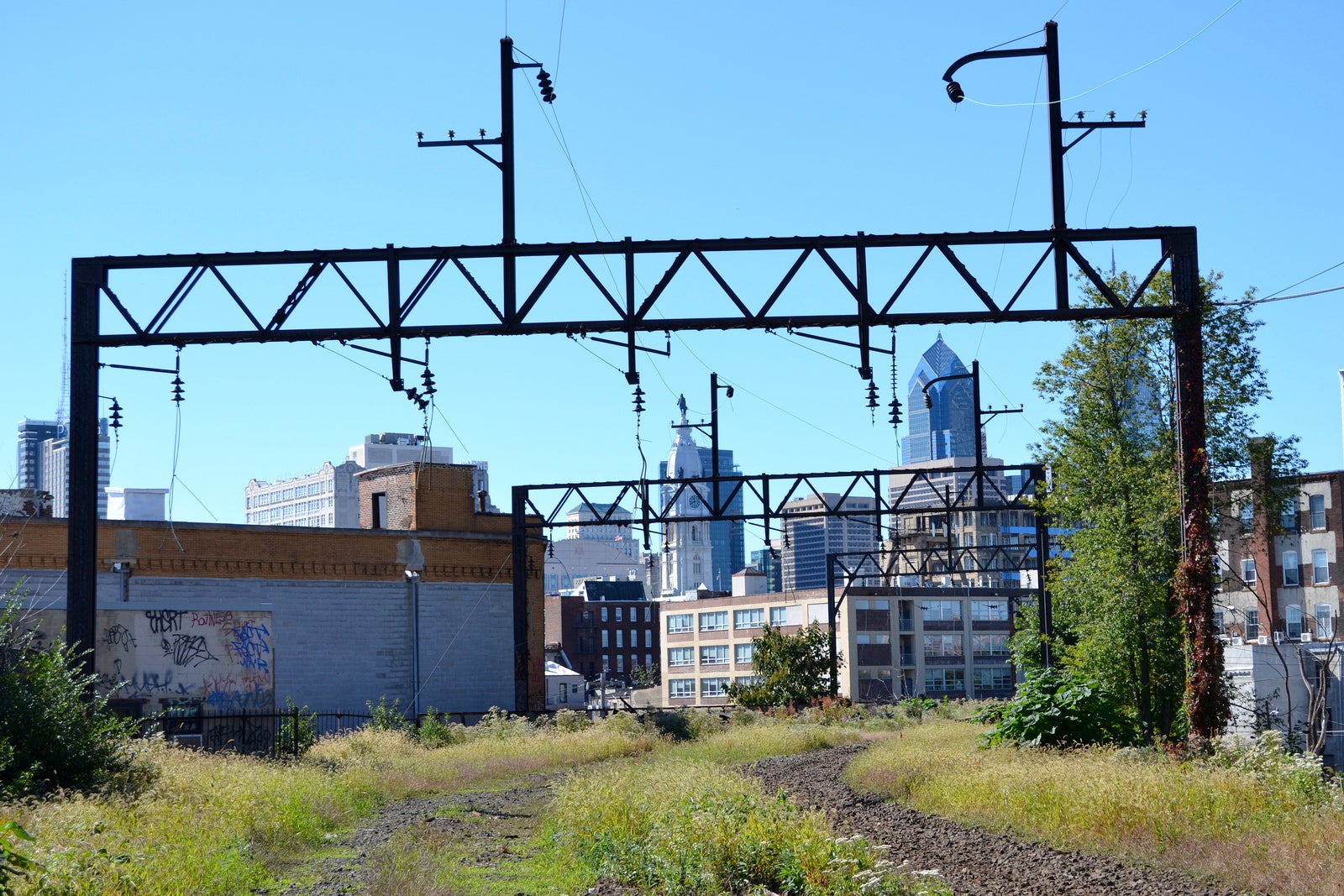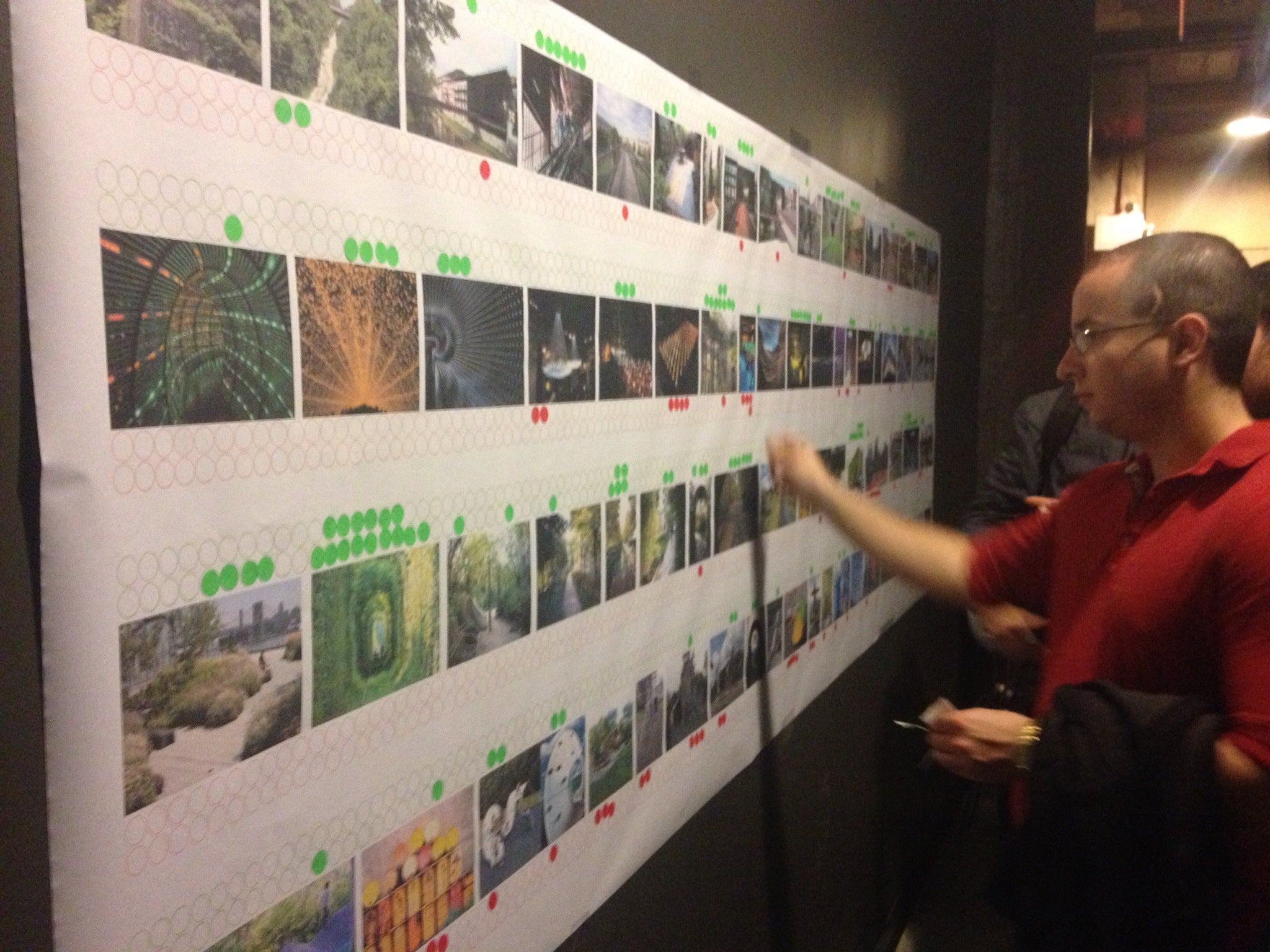VIADUCTgreene invites public input on Viaduct park

Skyline view from the elevated portion of the Reading Terminal Viaduct, October 2012.
Imagine transforming an abandoned rail viaduct into an urban elevated park as a way to revitalize and connect Philadelphia’s industrial past to its future. That’s the hope of the advocacy group VIADUCTgreene, which co-hosted a public workshop about re-envisioning the Reading Viaduct as part of DesignPhiladelphia on Saturday.
The Reading Viaduct actively carried trains until 1984, and in recent years it has grabbed the city’s imagination and attention. VIADUCTgreene, started by Paul vanMeter and Liz Maille, is advocating for the creation of a three-mile long urban park on the abandoned viaduct.
Today the elevated portion is an unplanned green space, stretching northward from 12th and Vine to 9th and Fairmont, and it is already an amazing place to walk and explore. And now residents have been inspired to reimagine the viaduct’s past and look at new uses for the crumbling relic.
“You can literally feel the history of the site,” said vanMeter of VIADUCTgreene.
Saturday’s conversation was intended to encourage public input about design concepts for a linear viaduct park and spread the word about the project. Questions about the project’s viability, design, and representation of history were all themes covered during an open exchange between the members of VIADUCTgreene and the audience. Ideas from this session will feed into the design group’s future efforts, including a possible international call for designs.
Topics of conversation, after a brief presentation, included an animated discussion about design alternatives, logistical issues, and questions of cooperation from city officials and other city greening organizations.
Neighbors asked about the possible collaboration with planners working on the Spring Garden Greenway, which led to a discussion about creating a connection at 9th Street that could extend both greening efforts further into the city.
“I see a huge opportunity to integrate fine art into applied art,” said vanMeter.
Thoughts for the design of the viaduct’s City Branch included ideas to integrate skylights along the underground portion (roughly Broad to 31st Street) to introduce more stimulating light and shadows.
The design for the “trunk” portion, or the joint between the two curving sections of the elevated viaduct, at 11th and Callowhill was also discussed. Planners see this portion as a potential pocket park as it offers amazing, sweeping views of the city.
After the lecture and discussion, various idea stations were arranged to encourage feedback and gather opinions from visitors. Stations asked for naming ideas for the park and what the public would prefer to see in the final product. Visitors were encouraged to apply stickers to the walls with their ideas.

Green dots indicate the kinds of design elements visitors would prefer to see in a new viaduct park.
Some thoughts generated on the ideas board were calls for places to play, bikeable paths, lots of access points, places for public events, and requests to keep it wild.
Visitors placed red or green sticker dots on a precedent board to show a positive or negative reaction to images. Green dots gravitated towards images of green wall installations, use of natural materials, walkable paths with benches and semi enclosed spaces amid walls of vegetative materials. Red dots clustered on images of hardscape and plastic looking playgrounds.
The result was an interactive workspace that inspired visitors to get involved and literally graffiti the walls with their ideas.
Currently, redevelopment projects in the area have placed pressure to move forward with the viaduct project. PennDOT determined the need to repair the Broad Street bridge (which the Reading Viaduct runs beneath) and the landmark Inquirer Building, adjacent to the Viaduct, was sold to developer Bart Blatstein. The outcome of these two projects could factor heavily into the Reading Viaduct’s future.
WHYY is your source for fact-based, in-depth journalism and information. As a nonprofit organization, we rely on financial support from readers like you. Please give today.



